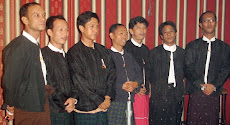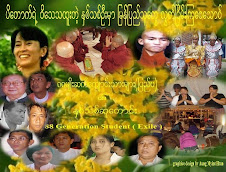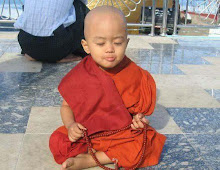MAE SOT, Thailand—She is calm, modest, down-to-earth, and a woman of few words. In 2003, Time magazine dubbed her a “hero” for her commitment to humanitarian work.
In the Thai border town where she runs her medical clinic, she has earned the moniker, “The Lady of Mae Sot,” though the international media invariably describe her as a “Burmese Mother Teresa.”
An ethnic Karen who grew up in Moulmein, Dr Cynthia Maung was a physician at the time of Burma’s pro-democracy uprising in 1988. Like thousands of others who took part in the demonstrations, she fled by foot to the Thai border where she took shelter at Mae La refugee camp and helped out by working as a medic.
But her quiet determination and unwavering conviction was to change the face of the Thai-Burmese border. Unwilling to resign herself to living as a refugee, Cynthia made contact with the Mae Sot authorities and sought a building or a warehouse to use as a clinic to treat war refugees from Burma as well as those who had fled the military crackdown.
Along the Thai-Burmese border at that time, malaria was endemic; landmine victims died from a lack of treatment; and TB, blackwater fever, diarrhea and malnutrition were everyday ailments.
Cynthia found a run-down barn on the outskirts of Mae Sot, and the local Thai authorities allowed her to set up a rather dilapidated indigent hospital.
“At first, it didn’t look a clinic,” she told The Irrawaddy last week. “It was no more than a shelter used by activists who had fled from Burma after the uprising. But some of them were physicians, nurses, paramedics or university students who majored in medicine. They could help.”
At first, the clinic received about 2,000 patients per year. They lay side by side on the wooden floors, while volunteers served up bowls of rice, proffered syringes and wheeled IV drips across the muddy compound.
“We didn’t have enough funds or a regular budget,” she explained. “But the Karen National Union (KNU) health department provided assistance to us. They helped us with fund-raising, and connected us with international donors, NGOs, churches and Thai businessmen.”
Through the 1990s, word spread about Cynthia’s clinic. Migrant workers in Thailand and villagers from inside eastern Burma were inspired by its solid reputation—no doubt combined with the fact that its services were free of charge—and sought treatment at what many people continued to refer to as the “student clinic,” recalled Cynthia.
She said that the project started to receive contract funding in 1999—some 20 million baht (US $650,000) per year.
Mae Tao Clinic grew and grew, and in addition to training medics, it began hosting training programs on health care, education and human rights.
The clinic’s current budget stands at 120 million baht ($4 million), $85 million of which goes toward the clinic’s various health care programs. Some $25 million is set aside for education and facilities for children; the rest of the budget is stretched to fund the construction of schools and new facilities, said Cynthia.
Today the Mae Tao Clinic sees between 120,000 to 130,000 patients annually, including those living with HIV/AIDS, as well as malaria patients, landmine victims, pregnant mothers, and anyone and everyone else who turns up in need of help.
Only around 20,000 of those treated every year at the clinic receive in-patient medical care. The rest are outpatients. Cynthia said that most of the patients are migrant workers who don’t have proper legal documents and insufficient funds to pay medical fees.
The Mae Tao Clinic now has about 300 medics, nurses and secretariat staffers. There are a few doctors who mostly work at training medics and nurses. It also facilitates and provides funding to mobile healthcare units in conflict zones in eastern Burma so that they can attend to some of the hundreds of thousands of internally displaced persons in the region.
Mae Tao provides direct financial support to one school in Mae Sot, but also facilitates funding for 78 other local schools which host about 17,000 students and provide jobs for no less than 700 teachers.
Internationally recognized with various awards for her tireless work, Cynthia Maung was the first winner of the Jonathan Mann Award in 1999, and a recipient of the Ramon Magsaysay Award in 2002.
But the happy ending has not yet been written in this rags-to-riches fairy tale. For despite the clinic’s unparalleled success, and Cynthia’s personal appeal as a beacon of hope and as a model of integrity, the Mae Tao Clinic is facing such chronic cuts in funding that its status is in severe jeopardy.
One major donor, Norwegian Church Aid (NCA) has not approved its 2012 budget for the clinic. The NCA’s support will now go toward government-approved projects inside Burma operating under the current peace plan, said Cynthia.
As international donors move into Burma, more and more border-based NGOs and dissident groups are being left behind. The Mae Tao Clinic is no exception.
“Only 50 percent of our funding for 2012 is approved,” said Cynthia. “We will know again soon if that amount can be raised to 70 percent.”
Undoubtedly, many INGOs have been inspired to move operations to Rangoon as a result of the ceasefire agreements that have been signed between ethnic armed groups such as the KNU and the Burmese government.
However, many observers, including migrant workers, still have serious doubts over the durability of such peace agreements.
“People don’t realize that there is a vulnerable community of stateless people who have been living on the Thai-Burmese border for years who don’t have homes in either Burma or Thailand,” said Cynthia.
“Some vulnerable groups have no contact with their family in Burma,” she said. “The security, health and education of their children are essential. But unless the Burmese government handles this problem, community-based organizations need to be able to step in and assist.”
















+Post+Card+1+(final).jpg)
+Post+Card+2+(final).jpg)




No comments:
Post a Comment